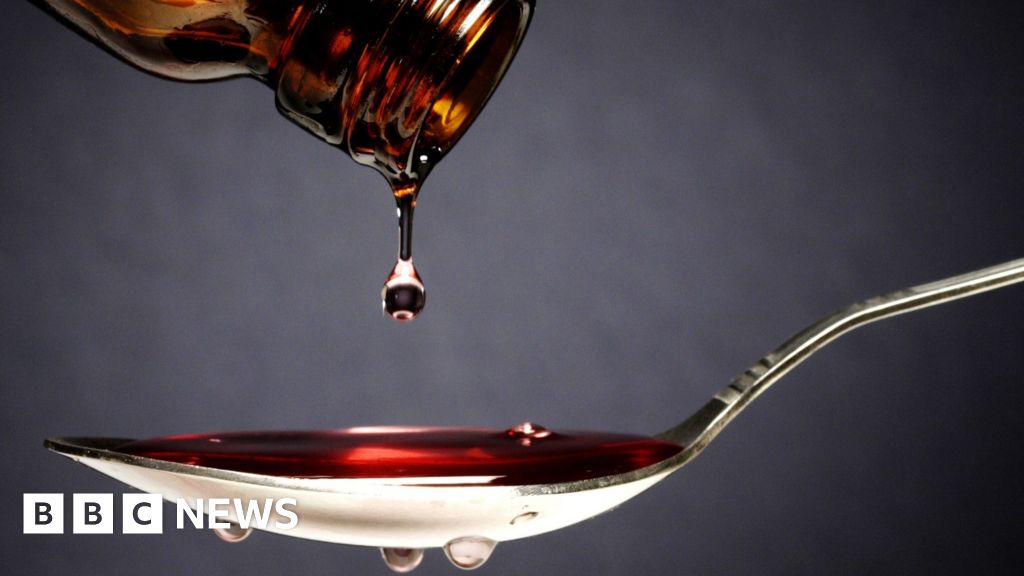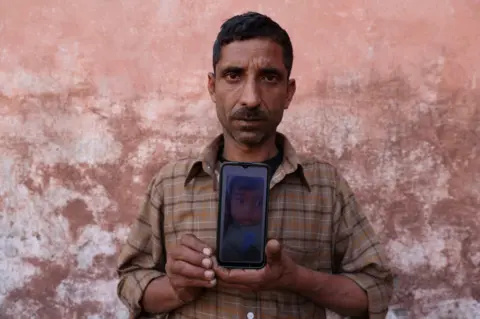- Lahore High Court summons top law officers over delay in Punjab LG polls Dawn
- ECP decides to hold local govt polls in Punjab in last week of December Dawn
- ECP to hold Punjab local government polls in December The Express Tribune
- Local bodies…
Blog
-
Lahore High Court summons top law officers over delay in Punjab LG polls – Dawn
-
Floods dampen Pakistan’s growth outlook – Dawn
- Floods dampen Pakistan’s growth outlook Dawn
- Pakistan’s economic recovery a myth? Millions still struggle in poverty; here’s what World Bank says Times of India
- World Bank predicts slower growth, higher inflation for Pakistan The Nation…
Continue Reading
-

Inside India’s cough syrup obsession
Soutik BiswasIndia correspondent
 Reuters
ReutersA father holds a photo of his child, who is one among at least 12 children under five years of age, whose deaths have allegedly been linked to a cough syrup in Jammu It’s happening again.
In early September, a…
Continue Reading
-
US approves major missile sale to Pakistan – Business Recorder
- US approves major missile sale to Pakistan Business Recorder
- Pakistan to be sold advanced US air-to-air missiles by Raytheon Dawn
- The Quiet Approval of New AMRAAM Missiles May Revive Pakistan’s F-16 Program quwa.org
- US names Pakistan, Saudi…
Continue Reading
-
FDI outflows: reflection of diminishing confidence – Business Recorder
- FDI outflows: reflection of diminishing confidence Business Recorder
- Exporters hedge risks via forward dollar sales Dawn
- Moment of Reckoning Daily Times
- Pakistan Eyes $200B Investment from Qatar newztodays.com
- Pakistan: Infrastructure, Inflation,…
Continue Reading
-
Tax collection shortfall challenge: IMF likely to stipulate new steps – Business Recorder
- Tax collection shortfall challenge: IMF likely to stipulate new steps Business Recorder
- Rate cut unlikely this month, says SBP governor Dawn
- FBR moves to publicise civil servants assets Geo.tv
- IMF shares draft MEFP with Pakistan as talks near…
Continue Reading
-
Two years of hellish war have devastated Gaza’s children – Unicef
- Two years of hellish war have devastated Gaza’s children Unicef
- With nearly 20,000 dead, children biggest victims of Gaza genocide | Daily Sabah Daily Sabah
- Xinhua News | Over 60,000 children killed or maimed in Israel-Palestine conflict:…
Continue Reading
-
Africa needs conflict prevention as the continent faces unprecedented threats – UN News
- Africa needs conflict prevention as the continent faces unprecedented threats UN News
- African Union’s partnership with UN “essential to confronting threats” facing Africa africanews.com
- Pakistan calls for stronger United Nations-African Union…
Continue Reading
-

Two People Reportedly Shot Dead Outside Famous Bakery in Islamabad
Two people were shot dead late Tuesday night outside Loafology bakery in Islamabad’s Blue Area, opposite the Islamabad Stock Exchange (ISE) Tower.
Both victims were hit multiple times, including in the head, and died on the spot.
Continue Reading
-
Pakistan seeks regional countries’ help to counter threats from Afghanistan – Dawn
- Pakistan seeks regional countries’ help to counter threats from Afghanistan Dawn
- Russia hosts Taliban delegation and warns against foreign military presence in Afghanistan AP News
- TOLOnews – 6pm News – 07 Oct 2025 TOLOnews
- Moscow rules out…
Continue Reading